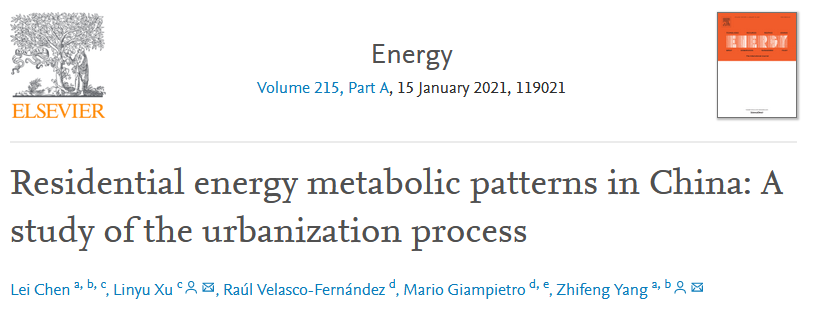Chen, L.; Xu, L.; Velasco-Fernández, R. et al. 2021. “Residential Energy Metabolic Patterns in China: A Study of the Urbanization Process.” Energy 215 (January): 119021.
Abstract
With the expansion of the acceleration of the urbanization process, China experienced a corresponding high demand for energy, which led to significant changes in energy metabolic patterns. The application of the MultiScale Integrated Analysis of Societal and Ecosystem Metabolism (MuSIASEM) approach facilitates the study of the factors that determined the impressive transformation of China’s residential energy metabolism since 2000. The findings revealed that the year 2009 was a turning point, when the household hours of urban areas exceeded those of rural regions. Before 2009, the residential energy metabolic rate remained relatively stable, the domination of biofuels delayed the increase in the energy metabolic rate (EMR). With the rise in the rapid growth of non-basic living energy demand, the EMR of households has rapidly increased after 2009. A complete decomposition analysis of the EMRs showed that the increase in residential metabolism was dragged down by the urbanization effect from rural households. Moreover, in respect to the energy carriers, the urbanization effect accounted for less than 10% of the total changes in the fuel and electricity EMR, which indicates that energy performance, in regard to the lifestyles in both urban and rural households, will bring about new challenges to China’s energy-saving and energy structure refining policies.

